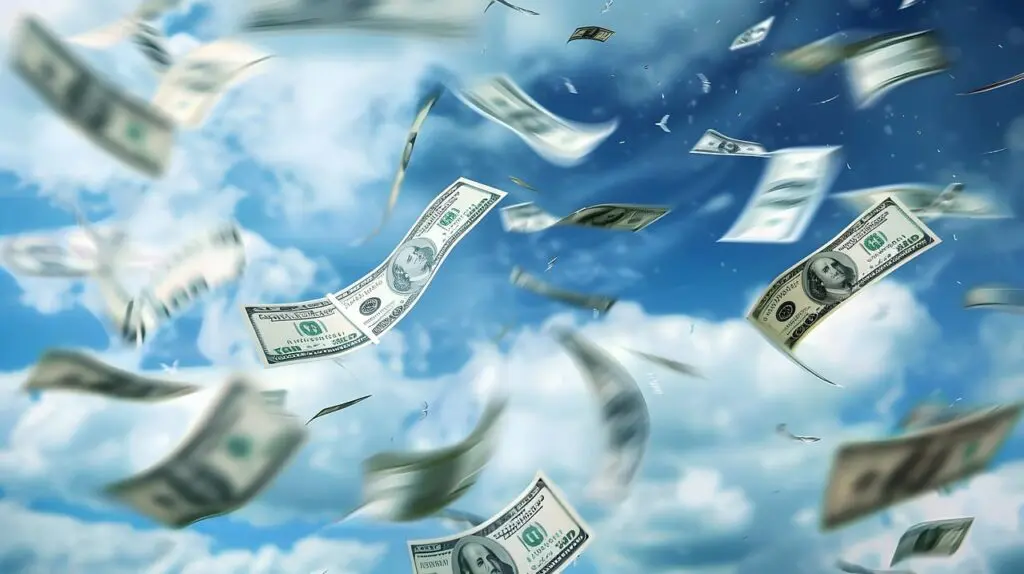Donald Trump, the former president of the United States currently running for a second term in office, appears to have endorsed one of the worst economic ideas a president or candidate could concoct. Its gravity and significance of such proportions that I am going to write a three-part article about it. This is Part I.
From the Wall Street Journal, Weekend April 27-28th print edition:
Donald Trump’s allies are quietly drafting proposals that would attempt to erode the Federal Reserve’s independence if the former president wins a second term, in the midst of a deepening divide among his advisers over how aggressively to challenge the central bank’s authority.
Just so we all understand the gravity of this: the independence of the Federal Reserve is as important to the strength of the economy as the Supreme Court’s independence is to the integrity of our constitution.
The Journal continues:
A small group of the former president’s allies—whose work is so secretive that even some prominent former Trump economic aides weren’t aware of it—have produced a roughly 10-page document outlining a policy vision for the central bank, according to people familiar with the matter.
Among their ideas, we find a mandate for the Federal Reserve to “consult” the president on interest-rate changes. Today, those changes are decided by the Fed’s Open Market Committee.
Another idea is to make the U.S. Treasury Department an oversight agency for the central bank. By folding the Fed into the Treasury, the president effectively creates his own monetary printing press. He no longer has to squabble with Congress if he wants more money to spend.
A third idea is to give the president the authority to fire the chairman of the Federal Reserve before the chairman’s term expires. Compare this to giving the president the authority to fire a Supreme Court Justice if he is displeased with how the Justice votes.
There are many more details in the Wall Street Journal story, but before we dig further into it, let us take a quick look at the reactions so far. This became a big story, namely, even before the ink on the Journal’s Weekend edition had dried.
A news report from Business Insider presents the gist of the story from the Journal, as do many other news outlets. A far more pointed article over at UnHerd.com suggests that Trump has de facto declared war on the Federal Reserve. His motive, they say, is obvious:
Why wouldn’t a government leader want the central bank to underwrite its spending decisions with cheap credit?
This is a succinct summary of one of the most destructive consequences of ending the central bank’s independence. But it only scratches the surface.
It is encouraging to see that most of the reactions to the Wall Street Journal story have been negative. A summary over at MarketWatch.com of those negative reactions includes one from Eric Rosengren, the former president and CEO of the Federal Reserve Bank in Boston:
One topic almost all economists agree on, The policies that Arthur Burns, chair of the Fed during the Nixon administration, followed to "consult" with the president were a disaster – leading to prolonged period of inflation. I hope today's WSJ article on the Fed are not serious.
— Eric Rosengren (@EricSRosengren) April 26, 2024
Unfortunately, Rosengren finishes his comment with the “hope” that the Wall Street Journal’s revelation of Trump’s Fed plans “are not serious.” This shows that he does not understand how Trump’s presidential campaign works: no idea of this magnitude would gestate into a fully drafted proposal without the presidential candidate’s approval.
Perhaps Rosengren makes light of Trump’s idea because he, like most of us, remembers Trump as having a good general command of economic policy. As president, Trump championed a good tax reform as well as economically meaningful deregulations across the federal government.
The fact that he did not rein in government spending is unfortunate, but he is far from alone here. The parameters that determine federal entitlement spending are statutorily regulated, and cannot be changed unless by an act of Congress. Therefore, Trump cannot be blamed for not doing more than he did to curb spending; anything of substance would have required an extraordinary level of engagement from Capitol Hill, where people are way too fond of spending money.
Trump only has one blind spot when it comes to the economy. That spot is monetary policy and its institutional core: the independence of the central bank. While in office, Trump made no secret of his desire to control the Federal Reserve—behold a Business Insider article from 2018:
President Donald Trump continued to blast the Federal Reserve’s recent interest rate hikes in an interview Monday [August 20th, 2018], days after complaining about Federal Reserve Chairman at a private GOP fundraiser. Trump told Reuters that he was “not thrilled” by Powell’s decision to raise interest rates and would continue to criticize the Fed if interest rate hikes continued.
This criticism came from President Trump at a time when the Federal Reserve kept its policy-setting federal funds rate at half of today’s rate. As Figure 1 shows, after Trump’s criticism back in 2018, the Fed raised its federal funds rate twice before reaching the pre-pandemic top at 2.4%:
Figure 1
If Trump was complaining about interest rate increases at levels below 2.5%, it is not hard to imagine his attitude toward the Federal Reserve if it maintains its funds rate at more than twice that, as is currently the case. This raises the likelihood that he, if elected president, would try to push through some kind of reform that would demote the Federal Reserve from its current status to something more akin to an agency under the U.S. Treasury.
Massive criticism notwithstanding, as I will explain in Part II, Trump could actually get this idea through Congress. Should he succeed, the consequences will be monumental for the American economy. The Wall Street Journal touches upon this side of the issue:
The discussions have alarmed some Trump advisers with more-traditional views of the role of the Fed, as well as Republican lawmakers. They worry that chiseling away at unwritten norms around keeping politics at arm’s length from Fed decisions could backfire, particularly if political interference leads investors to conclude that the central bank is willing to tolerate higher inflation.
Again, these are valid points, but they only scratch the surface of what is at stake here. Parts II and III will explain in detail what untold harm Trump could cause if he got his way here.





